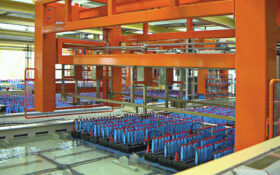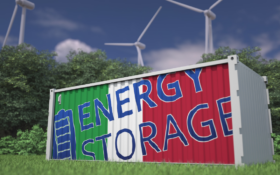A research team from Harvard University is developing a grid-scale flow battery using quinone as the electrolyte.
The metal-free flow battery uses carbon-based quinones, which are naturally abundant, inexpensive, small organic molecules that store energy in plants and animals, for the electrolyte.
More than 10 000 quinone molecules were screened to find the ideal candidate for the battery.
Flow batteries work by storing energy in the quinones in external tanks. These tanks dictate the capacity of the battery— the amount of energy stored is only limited by the size of the tanks, this means large amounts of energy could be stored at lower cost than in traditional batteries.
The team claims the battery already performs as well as the most commercially advanced vanadium flow batteries but with far lower cost components and chemicals.
Roy Gordon, professor of chemistry and materials science, one of the professors leading the research said: “With organic molecules, we introduce a vast new set of possibilities. Some of them will be terrible and some will be really good. With these quinones we have the first ones that look really good.”
Quinones are found abundantly in crude oil and vegetation. The molecule used in the Harvard flow battery is very similar to that found in rhubarb.
Stored in tanks, the quinones are dissolved in water to prevent combustion. For commercial or home use, a tank could be stored in a basement or external storage tank with sufficient energy stored for the needs of the attached generating system.
The progression from laboratory testing to commercial scale will require further work. “So far, we’ve seen no sign of degradation after more than 100 cycles, but commercial applications require thousands of cycles,” said Michael Aziz, professor of materials and energy technology. “I think the chemistry we have right now might be the best that’s out there for stationary storage and quite possibly cheap enough to make it in the marketplace,” he added.
The team anticipates being able to deploy demonstration versions of the battery in a container on a trailer within the next few years.












